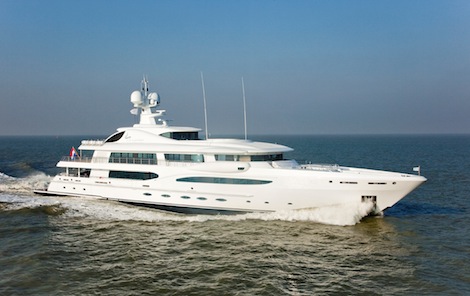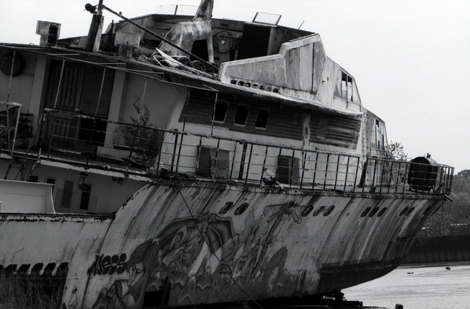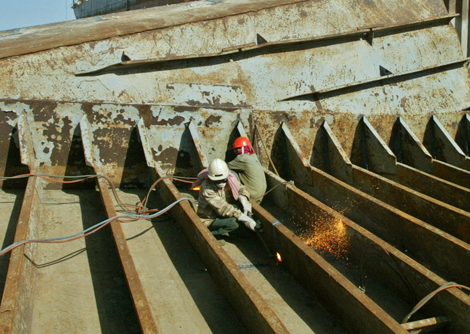First signs of a new superyacht lifecycle
A 65.5m superyacht, the Amels 212 has become the first superyacht to be awarded the Inventory of Hazardous materials (IHM) status by Lloyds register. The achievement prompts considerations for how the IHM guidelines, when fully enforced, will affect the superyacht's life from ‘birth to grave’....…
“Fulfilling all the requirements for the Green Passport has entailed a very large effort from Amels over the past three years and also for all the suppliers and contractors involved in building the Amels 212,” said project manager, Sjoerd van den Broek.
“Hopefully she will sail for more than a hundred years but at the end of her life on the sea, her materials can be recycled in a controlled and environmentally responsible manner,” he added.
The achievement prompts considerations for how the IHM guidelines, when fully enforced, will affect the lifecycle of the superyacht as well as the process of building a yacht.
Lloyds Register released guidelines for IHM in 2010 following the Hong Kong International Convention of Safe and Environmentally Sound Recycling of Ships 2009. The Convention was established to start the process of documenting hazardous materials to improve the recycling process at the end of a vessel's lifecycle.
Lloyds Register does not require new builds to adopt the rules - these have not been agreed on, although they have been ratified - which are likely to be enforced between 2014 and 2016. But existing yachts will have to be audited after a 5 year ‘grace’ period, according to the panel discussion held on the subject at Global Superyacht Forum (GSF). In following the IHM now therefore, Amels is arguably doing the hard graft to make things easier down the line. There are also financial incentives behind the endeavour according to the yacht’s project and management director, Daniel Küpfer, from OCEAN Management.
“It is time to monitor the lifecycle of a ship from ‘birth to grave’. We also feel that this may enhance the resale value as this passport is set to become compulsory for superyachts in the future,” said Küpfer.
Achieving the IHM over its three year build was, by the yard's account, a complex process. But this is just a taste of what could come as the requirements Amels met do not represent the final IHM ruling. According to the IHM guide the scope of current requirements is “a reasonable listing of expected or known hazards… It is not a detailed and accurate account of each and every hazardous element on board the ship.”
The likely demands of the finalised guide on the other hand will be more extensive and very detailed. Carlo Russo senior specialist at Lloyd's Register, speaking on the GSF panel, said that “simply to list (the items) is onerous.” Russo said that ‘Appendix A’ items, such as asbestos and Polychlorinated Biphenyls (PCBs), which yachts are encouraged to account for now are manageable. But ‘Appendix B’ items include materials used on a smaller scale - lead and mercury compounds – as well as 'hidden' properties such as liquids in paints. These will be much harder to account for.
Pieter Kuiper, Project Manager at ARN Advisory who worked with SYBASS to analyse the effects the Hong Kong Treaty will have on the industry, also predicted a heavier burden placed on communication along the supply chain.
“There will be massive admin required. Not only the type of the material but where it’s used in the yacht – so the building plan and materials list. For a new ship to address the requirements...everyone needs to be aware. Prohibited materials should be in contract between supplier and builder.”
Although the admin may be a headache however, new rules could open a new market for scrapping or recycling yachts, radically altering their current lifecycle. The practice is not widely done because of environmental pollution caused by scrapping. This was after all why the IHM guide was first created when, in response to outcry from environmental campaigners, the International Maritime Organization (IMO) published the IMO Guidelines on Ship Recycling in 2003 starting a snowball effect in the yacht industry. But in a market where a glut of second hand yachts is driving prices down, recycling could be an attractive option. Ready money, even if lower than the price received for a sale, may be preferred over protracted and uncertain deals for second hand yachts.
In any case Amels' achievement proves the feasibility of following the IHM guide albeit not according to its most complex incarnation. It is also possible the Amels 212 could encourage more builders to prepare for the time when the guidelines are obligatory. For new builds now, supposing full guidelines are enforced in 2016, and factoring in the five year grace period, that is nine years away. It seems a long way off but achieving familiarity with the fundamental requirements could make it easier for when things become more stringent and a fully fledged set of rules is enforced.
Related Links
A guide to the IHM or 'green passport' can be downloaded here
Amels Profile | Amels Website
OCEAN Management Profile | OCEAN Management Website
ARN Advisory Website
Lloyds Register Website
NEW: Sign up for SuperyachtNewsweek!
Get the latest weekly news, in-depth reports, intelligence, and strategic insights, delivered directly from The Superyacht Group's editors and market analysts.
Stay at the forefront of the superyacht industry with SuperyachtNewsweek
Click here to become part of The Superyacht Group community, and join us in our mission to make this industry accessible to all, and prosperous for the long-term. We are offering access to the superyacht industry’s most comprehensive and longstanding archive of business-critical information, as well as a comprehensive, real-time superyacht fleet database, for just £10 per month, because we are One Industry with One Mission. Sign up here.
NEW: Sign up for
SuperyachtNewsweek!
Get the latest weekly news, in-depth reports, intelligence, and strategic insights, delivered directly from The Superyacht Group's editors and market analysts.
Stay at the forefront of the superyacht industry with SuperyachtNewsweek






